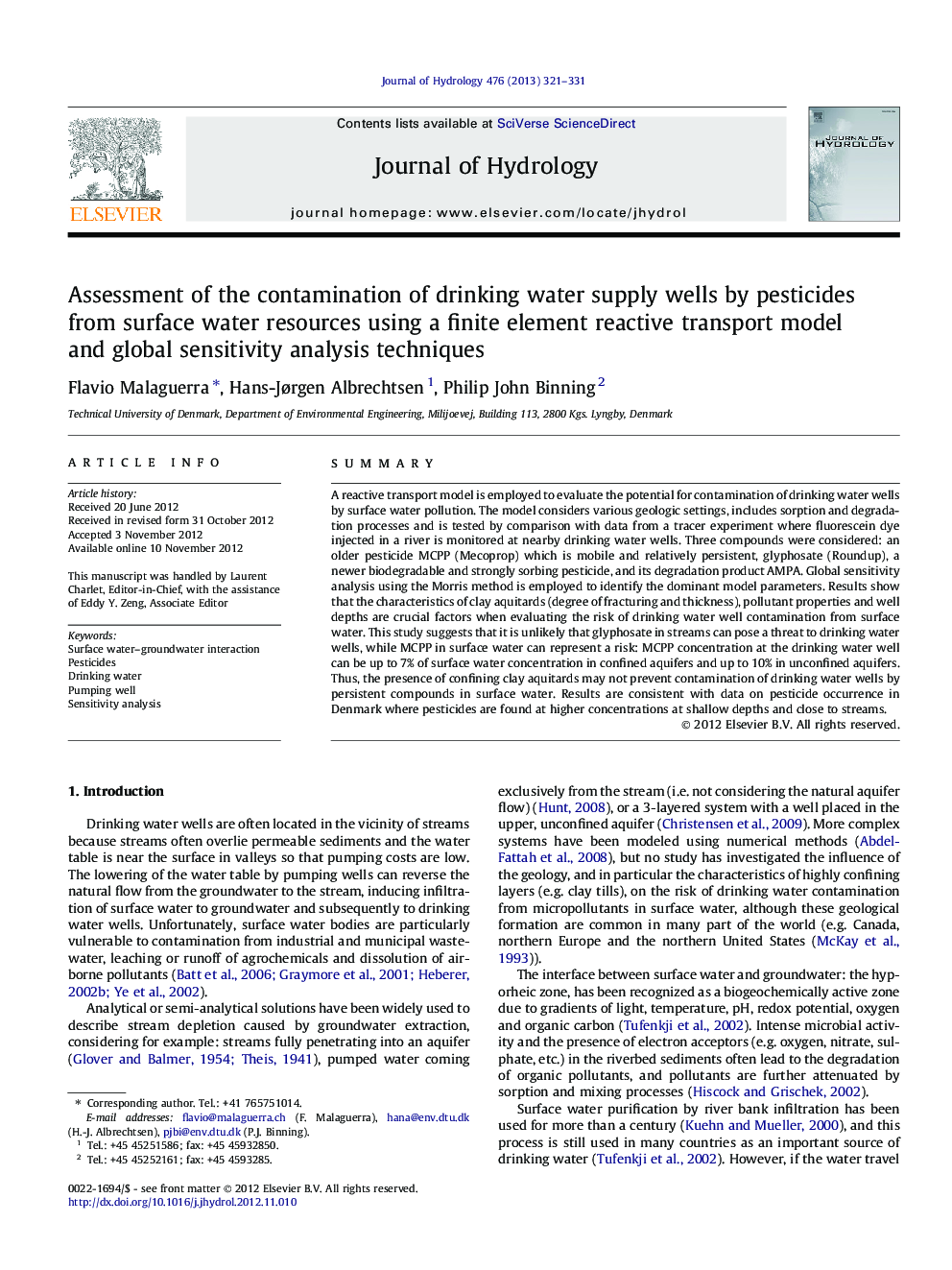| Article ID | Journal | Published Year | Pages | File Type |
|---|---|---|---|---|
| 4576622 | Journal of Hydrology | 2013 | 11 Pages |
SummaryA reactive transport model is employed to evaluate the potential for contamination of drinking water wells by surface water pollution. The model considers various geologic settings, includes sorption and degradation processes and is tested by comparison with data from a tracer experiment where fluorescein dye injected in a river is monitored at nearby drinking water wells. Three compounds were considered: an older pesticide MCPP (Mecoprop) which is mobile and relatively persistent, glyphosate (Roundup), a newer biodegradable and strongly sorbing pesticide, and its degradation product AMPA. Global sensitivity analysis using the Morris method is employed to identify the dominant model parameters. Results show that the characteristics of clay aquitards (degree of fracturing and thickness), pollutant properties and well depths are crucial factors when evaluating the risk of drinking water well contamination from surface water. This study suggests that it is unlikely that glyphosate in streams can pose a threat to drinking water wells, while MCPP in surface water can represent a risk: MCPP concentration at the drinking water well can be up to 7% of surface water concentration in confined aquifers and up to 10% in unconfined aquifers. Thus, the presence of confining clay aquitards may not prevent contamination of drinking water wells by persistent compounds in surface water. Results are consistent with data on pesticide occurrence in Denmark where pesticides are found at higher concentrations at shallow depths and close to streams.
► Surface water contaminants can reach water wells located in confined aquifers. ► Global sensitivity analysis tools allowed identifying most important parameters. ► Well depth, pesticide characteristics and clay layer thickness are very important. ► Persistent compounds in surface water can pose a threat to drinking water supply wells.
